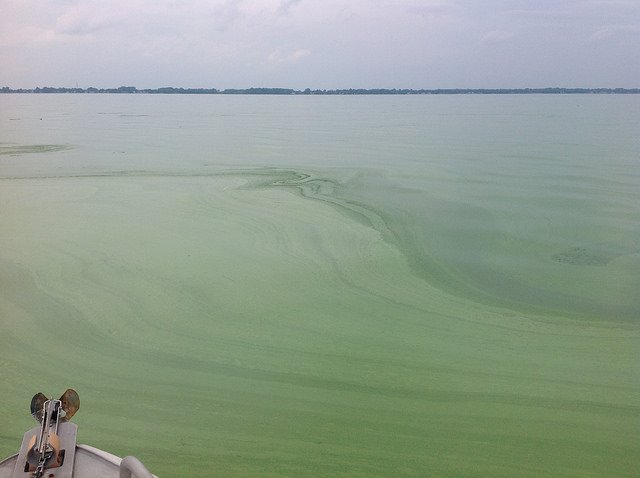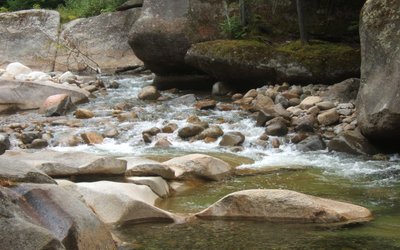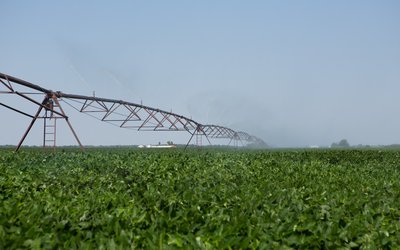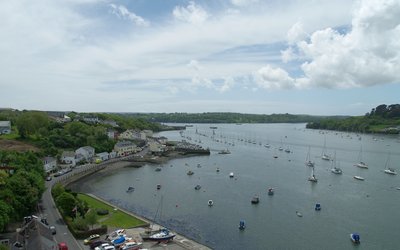Warmer water due to climate change may lead to more algal blooms, or less
October 20, 2017

Thick layers of algae in summer on Lake Erie (USA) (photo: NOAA, www.flickr.com)
In the summer of 2016 popular beaches in Florida were shut down. Toxic green algae stretched for miles along Florida’s coastline. Up north the waters of Lake Erie were covered with similar thick layers of algae. Agricultural runoff rich in nutrients combined with the water’s high temperature caused algae to thrive. These phenomena may become more frequent in summer due to higher water temperatures under climate change, but not necessarily. The opposite effect has also been observed. Whether warmer water leads to more or less algal blooms depends on local characteristics of water systems. This was concluded from a global study of 188 large lakes.
Correlations lake warming and algal blooms
Estimates of lake surface temperature and lake surface chlorophyll-a concentration (as a proxy for phytoplankton biomass) were derived from satellite observations. This was done for 188 of the world’s largest lakes over the period 2002-2016. 62% of the lakes showed positive correlations between chlorophyll-a concentration and lake surface temperature, of which 74% were statistically significant. Correlations were negative for 38% of the lakes, of which 68% were statistically significant.
Lakes with relatively low chlorophyll-a concentration were found to have more negative correlations between chlorophyll-a concentration and lake surface temperature whereas the opposite was found for lakes with relatively high chlorophyll-a concentration. Thus, lake warming tended to amplify lake-to-lake variability in phytoplankton biomass whereby phytoplankton-poor lakes were poorer in warm years and phytoplankton-rich lakes were richer in warm years.
Why algae-poor lakes get poorer in warm years
According to the authors of this study it would make sense that lake warming leads to less algae, at first glance. After all, warming increases phytoplankton’s demand for resources to support higher metabolic rates at higher temperature. These resources will become scarcer relative to their demand causing a metabolic deficit at higher temperatures. This would leave lakes capable of supporting less phytoplankton biomass.
Why algae-rich lakes get richer in warm years
The opposite may also be the case, however, for a number of reasons. In phytoplankton-rich lakes, lake warming strongly favours phytoplankton species such as cyanobacteria. Grazers less efficiently consume these species and phytoplankton biomass may accumulate in warm years as a result. Also, phytoplankton-rich lakes tend to have strong populations of fishes that feed on zooplankton and their consumption rates increase with lake warming. As a result there is less zooplankton to “graze” on phytoplankton. A third effect is thermal stratification of lakes due to surface warming, thus trapping nutrients below the photic zone where they are unavailable to surface phytoplankton. This effect is most pronounced in phytoplankton-poor lakes because internal nutrient loading via vertical mixing is often the primary source of nutrients to phytoplankton there. In contrast, external nutrient inputs and their subsequent recycling tend to dominate nutrient budgets in phytoplankton-rich lakes. In these lakes, external nutrient inputs may increase with warming driven by climate-mediated shift in rainfall and land use.
Effects on ecology, economy and society
Changes in phytoplankton biomass in some large lakes have been shown to have substantial effects on species, economies, and livelihoods. Higher phytoplankton biomass in phytoplankton-rich lakes may exacerbate problems associated with anthropogenic lake nutrient enrichment, such as the expansion of anoxic zones, harmful algal blooms, fish die-offs, and reduced water clarity. Managers may need to reduce anthropogenic nutrient loads that were acceptable in the past to maintain ecosystem functions in phytoplankton-rich lakes as they warm. In contrast, the reduction of phytoplankton biomass in phytoplankton-poor lakes with warming presents its own potential management challenges such as reduced fisheries productivity. In some cases, managers may want to fertilize lakes to sustain fish production.
Tailor-made management
Thus, the amplification of phytoplankton biomass in lakes in warm years, where algae-poor lakes get poorer and algae-rich lakes get richer, may require adaptive lake management at the local level to prevent loss of lake benefits to humans.
Source: Kraemer et al., 2017. Nature Scientific Reports 7 (10762)








